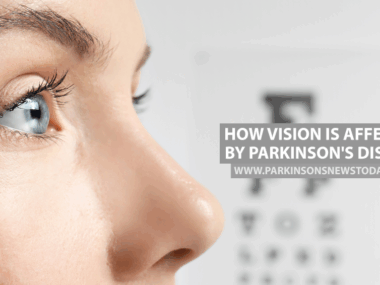Impaired pupil reflex in Parkinson’s may contribute to vision problems
Eye's reaction to light found to be slower in patients in new study
Written by |

Pupil light reflex (PLR), the automatic contraction or dilation of the eye’s pupil in response to light levels, was found to be impaired in people with Parkinson’s disease in a small study.
Impaired PLR is believed to contribute to the vision problems experienced by some Parkinson’s patients.
New data confirmed that this defect was more prominent in individuals who experienced dysfunction of the autonomic nervous system — the network of nerves throughout the body that control automatic bodily functions such as heart rate, blood pressure, and digestion. It also controls the ability of the eye’s pupil to contract or dilate in response to varying light levels.
“Our results support previous observations on defective PLR in [Parkinson’s], … and show a possible association with autonomic dysfunction,” the researchers wrote, adding, “Further studies with more patients and rigorous evaluation of autonomic dysfunction are needed to validate these findings.”
The study, “Pupil light reflex dynamics in Parkinson’s disease,” was published in the journal Frontiers in Integrative Neuroscience.
Testing pupil reflex in Parkinson’s patients vs. healthy controls
A common nonmotor symptom of Parkinson’s disease is the dysfunction of the autonomic nervous system, known as dysautonomia. Extending from the brain and spinal cord, autonomic nerves control involuntary bodily functions, including pupil light reflex, or PLR.
While problems with this reflex may play a role in the vision problems seen in people with this disorder, “studies investigating the intercorrelation between PLR and dysautonomia in [Parkinson’s disease] are limited,” the researchers wrote.
To fill this knowledge gap, a team of scientists in Sweden applied an eye-tracker to Parkinson’s patients, with and without signs of autonomic dysfunction, to measure differences in PLR response.
Orthostatic hypotension, a sudden drop in blood pressure when standing up that leads to dizziness and loss of balance, was used as a marker for autonomic dysfunction.
The team enrolled 36 adults with early-stage Parkinson’s, with a median disease duration of two years, of whom 24 were women. A control group of 35 age-matched unaffected individuals also was included. All participants with Parkinson’s were being treated with standard therapies during testing.
Six of the patients experienced orthostatic hypotension — all of them generally older, with more severe disabilities, and taking higher doses of Parkinson’s medications.
PLR was recorded using a screen-based eye tracker following a short and a long flash of light. The two flashes were expected to provoke different responses in PLR timing and magnitude.
In response to both short and long pulses of light, the peak constriction velocity of the PLR, or the highest speed at which the pupil closes, was significantly slower in Parkinson’s patients than in the healthy controls.
After short flashes, the size to which the pupil subsequently dilates — called the dilation amplitude — was smaller. Additionally, the overall speed of dilation, known as dilation velocity, was slower. Still, the difference did not reach statistical significance.
Parkinson’s patients with orthostatic hypotension had even slower and less effective pupil reflexes under both light conditions. This included PLR parameters such as peak constriction velocity, dilation amplitude, dilation velocity, and constriction slope, or the change in pupil diameter over time when it closes.
Age, medication dosages not found to play a role in PLR
No relationships were detected in testing between PLR measures and age, the degree of motor symptoms, overall disability, or the dose of Parkinson’s medications.
In the control group, as well as among patients with and without orthostatic hypotension, there was a strong correlation between peak constriction velocity and constriction amplitude, the degree to which the pupil closes. This occurred under short and long flash conditions.
There also were different PLR latency responses, or the delay in time from light exposure to pupil constriction. These occurred across all three groups following longer light flashes compared with short flashes.
After short flashes, the mean PLR latency responses were similar between controls (249.17 milliseconds) and patients with and without orthostatic hypotension (265 vs. 252.9 milliseconds).
By contrast, after long flashes, responses were fastest among controls (371 milliseconds). They were slower in Parkinson’s patients without orthostatic hypotension (560.8 milliseconds), and even slower in those with signs of autonomic dysfunction (623.8 milliseconds).
“Visual abnormalities in [Parkinson’s disease] can be attributed to various factors, including defective PLR,” the researchers concluded. “Patients that suffer peripheral autonomic dysfunction may have greater PLR defects.”







